Answered step by step
Verified Expert Solution
Question
1 Approved Answer
Referring to Exhibit 3.3 from scenario, then answer the following questions. Phase 1 Identify and diagnose the problem Phase 2 Generate alternative solutions ,

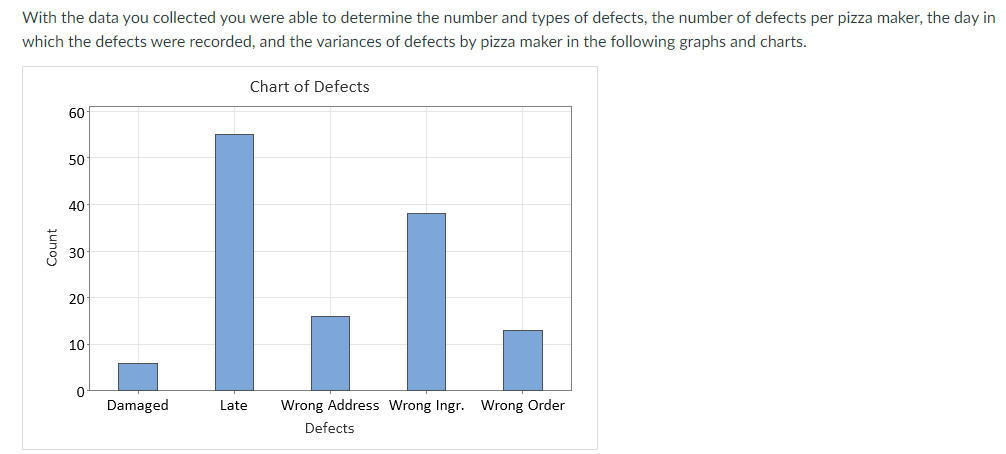
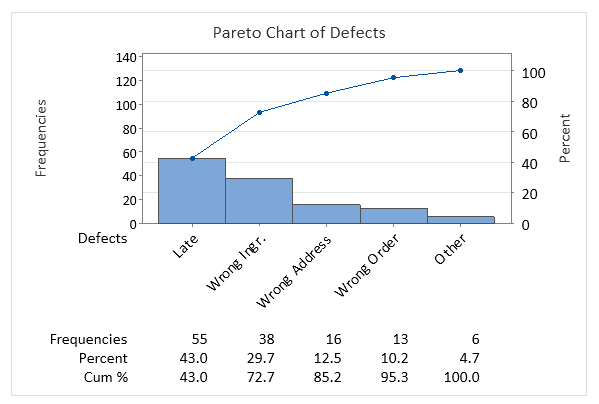
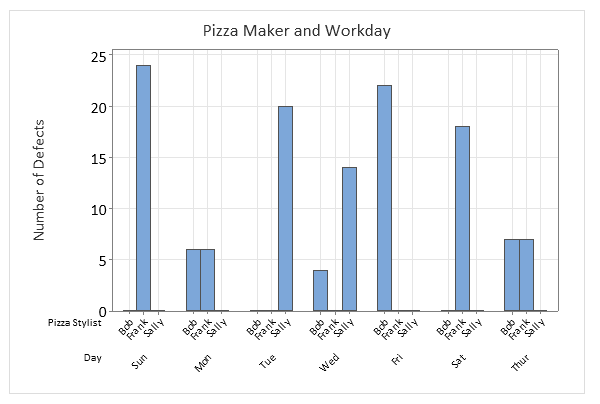
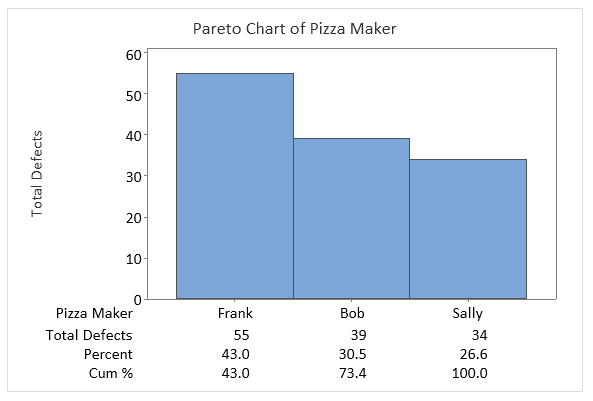

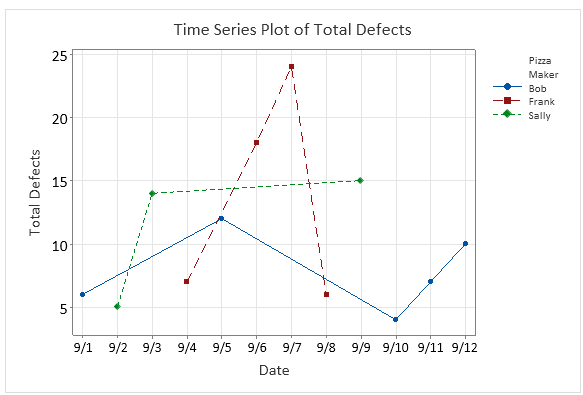
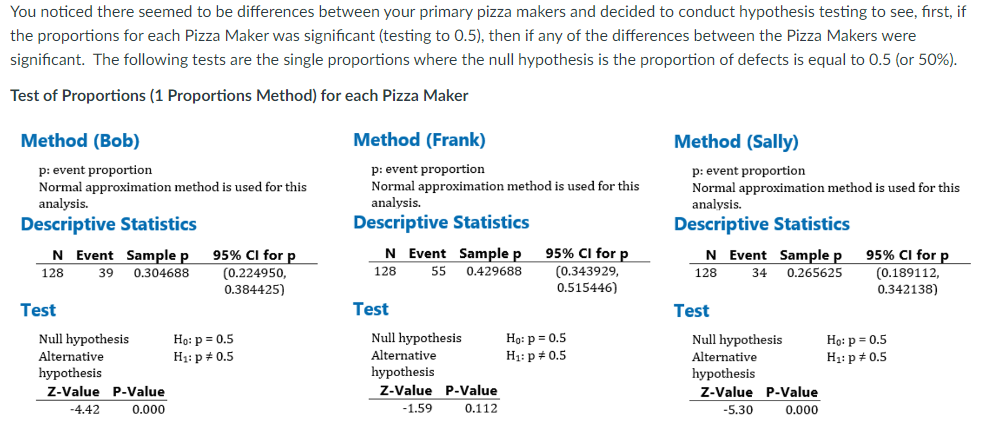


Referring to Exhibit 3.3 from scenario, then answer the following questions. Phase 1 Identify and diagnose the problem Phase 2 Generate alternative solutions , and using the statistics knowledge gained in Modules 1-3, read the given Phase 3 Evaluate alternatives Phase 4 Make the choice Phase 5 Implement the decision Phase 6 Evaluate the decision EXHIBIT 3.3 The Phases of Decision Making Scenario: You are now an assistant manager at Aces & Eights Pizza Company. The store owner was interested in customer service problems with pizzas that were delivered and asked you to find out what was going wrong and to provide your recommendations to improve the overall service. Therefore, over a 12-day period, you recorded how many pizzas were delivered and how many had defects that fell into the following categories: Late, Wrong Ingredients, Wrong Order, Wrong Address, and Damaged. In addition, you recorded the "Pizza Maker" who was making the pizzas each day. You have three primary pizza makers (Bob, Frank, and Sally). Bob had been working for Aces & Eights for a little over a year, Frank had been working for almost two months, and Sally, for about six months. In becoming a Pizza Maker, employees are first trained by the assistant manager for about a week, then they make pizzas under the observation of the "senior Pizza Maker" for approximately two weeks. After which, they are on their own to make pizzas, as the orders come in. With the data you collected you were able to determine the number and types of defects, the number of defects per pizza maker, the day in which the defects were recorded, and the variances of defects by pizza maker in the following graphs and charts. Count 60 50 40 30 20 10 Damaged Chart of Defects 1. Late Wrong Address Wrong Ingr. Wrong Order Defects Frequencie 140 120 100 80 60 40 20 Defects Frequencies Percent Cum % 0 Late 55 43.0 43.0 Pareto Chart of Defects Wrong Ingr. Wrong Address 38 29.7 72.7 16 12.5 85.2 Wrong Order 13 10.2 95.3 Other 6 4.7 100.0 100 80 60 40 20 0 Percent of Defects Number 25 20 15 10 5 0 Pizza Stylist Day Bob Frank Sally Sun Pizza Maker and Workday Bob Frank Sally Mon Bob Frank Sally Tue Bob Frank Sally Wed Bob Frank Sally Fri Bob Frank Sally Sat Bob Frank Sally Thur Total Defects 60 50 40 30 20- 10- 0 Pizza Maker Total Defects Percent Cum % Pareto Chart of Pizza Maker Frank 55 43.0 43.0 Bob 39 30.5 73.4 Sally 34 26.6 100.0 Total Defects 25 20 15 10 5 Bob Boxplot of Total Defects Frank Pizza Maker Sally Total Defects 25 20 15 10 5 Time Series Plot of Total Defects 9/1 9/2 9/3 9/4 9/5 9/6 9/7 9/8 9/9 9/10 9/11 9/12 Date Pizza Maker Bob Frank Sally You noticed there seemed to be differences between your primary pizza makers and decided to conduct hypothesis testing to see, first, if the proportions for each Pizza Maker was significant (testing to 0.5), then if any of the differences between the Pizza Makers were significant. The following tests are the single proportions where the null hypothesis is the proportion of defects is equal to 0.5 (or 50%). Test of Proportions (1 Proportions Method) for each Pizza Maker Method (Bob) p: event proportion Normal approximation method is used for this analysis. Descriptive Statistics N Event Sample p 39 128 0.304688 Test Null hypothesis Alternative hypothesis Z-Value P-Value -4.42 0.000 95% CI for p (0.224950, 0.384425) Ho: p = 0.5 H: p = 0.5 Method (Frank) p: event proportion Normal approximation method is used for this analysis. Descriptive Statistics N Event Sample p 128 55 0.429688 Test Null hypothesis Alternative hypothesis Z-Value P-Value -1.59 0.112 95% CI for p (0.343929, 0.515446) Ho: p = 0.5 H: p = 0.5 Method (Sally) p: event proportion Normal approximation method is used for this analysis. Descriptive Statistics N Event Sample p 34 128 0.265625 Test Null hypothesis Alternative hypothesis Z-Value P-Value -5.30 0.000 95% CI for p (0.189112, 0.342138) Ho: p = 0.5 H: p * 0.5 Test of Differences (2 Proportions Method) Between Pizza Makers 1. Method (Frank & Bob) P: Frank P2: Bob Difference: P-P2 Descriptive Statistics Sample N Event Sample p Frank 128 Bob 128 55 0.429688 39 0.304688 Estimation for Difference Difference 95% CI for Difference 0.125 (0.007900, 0.242100) CI based on normal approximation Test Null hypothesis Alternative hypothesis Method Normal approximation Ho: P1-P2 = 0 H: P1 P2 0 Z-Value P-Value 2.09 0.036 2. Method (Frank & Sally) P: Frank P2: Sally Difference: P P2 Descriptive Statistics Sample N Event Sample p Frank 128 55 0.429688 Sally 128 34 0.265625 Estimation for Difference Difference 95% CI for Difference 0.164063 (0.049133, 0.278992) CI based on normal approximation Test Null hypothesis Alternative hypothesis Method Normal approximation Ho: P1 - P2 = 0 H: P1 - P2 #0 Z-Value P-Value 2.80 0.005 3. Method (Bob & Sally) P: Bob P2: Sally Difference: P1-P2 Descriptive Statistics Sample N Event Sample p Bob 128 39 0.304688 Sally 128 34 0.265625 Estimation for Difference Difference 95% CI for Difference 0.0390625 (-0.071447, 0.149572) CI based on normal approximation Test Null hypothesis Alternative hypothesis Method Normal approximation Ho: P1 P2 = 0 H: P1 P2 0 Z-Value P-Value 0.69 0.488 Questions: 1. Fully describe the problem or opportunity in this scenario. 2. Fully develop and describe at least two alternatives (DO NOT analyze the alternatives here). 3. Fully analyze each alternative. 4. Provide your recommended alternative and provide the details as to why it is the best alternative.
Step by Step Solution
★★★★★
3.36 Rating (162 Votes )
There are 3 Steps involved in it
Step: 1
1 Problem or Opportunity Description The reading The Impact of Medicare on Access to and Affordability of Health Care examines the effects of Medicare coverage on healthcare accessibility and affordab...
Get Instant Access to Expert-Tailored Solutions
See step-by-step solutions with expert insights and AI powered tools for academic success
Step: 2

Step: 3

Ace Your Homework with AI
Get the answers you need in no time with our AI-driven, step-by-step assistance
Get Started


